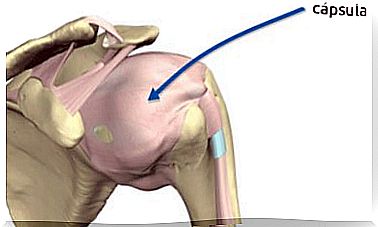7 Techniques To Facilitate The Delivery Process
Being guided by the treating doctors at the time of delivery is essential. But you must also actively decide on the process, on the resources and techniques available to facilitate your labor. Know what they are.

After spending weeks waiting and dreaming about the arrival of your baby, from week 37 the birthing process can begin. The first phase of labor begins with regular, painful contractions. The cervix is dilated to 4 centimeters. It’s time to ease the birthing process.
You may have to spend a few hours feeling contractions before reaching this point. You may even have spent the night without sleep and feel like the work started a long time ago. All of this is common and is part of the birthing process.
For new mothers, this first stage can last more than 18 hours. For mothers who have already had a baby, this initial stage can be shortened to 6 and 12 hours on average. However, it can also be slower. Just as each pregnancy is unique, so is each delivery.

Why does a labor slow down?
The first 5 centimeters of dilation of the cervix take much longer than the rest. A labor is not considered to progress at a good pace if during the first stage the cervix does not dilate by at least half a centimeter every hour. The reasons for this may be the following:
- Being dehydrated or exhausted.
- The baby is not in a good position.
- Feeling anxious, scared, or very tense.
- Contractions are infrequent, not strong, or instead of intensifying, they remain stable.
- The pelvis is narrow and long, causing the baby to roll back to back.
What causes the dilation of the cervix is precisely the intensification of the contractions. If this doesn’t happen, your doctor will offer you solutions to make labor easier.
What measures can the doctor propose?
If in the initial stage of labor the dilation of the cervix is delayed, the options that the doctor has to facilitate labor are basically breaking the amniotic sac, which is popularly known as breaking water, or placing an intravenous drip of drugs. that speed up labor and epidural anesthesia.
Breaking the amniotic sac speeds labor by one hour. This is more uncomfortable than painful. However, this procedure should not be done early in labor. Since delivery may not occur and there is a risk of infection.
Pitocin is a medicine that contains a man-made version of the birth hormone, oxytocin. If your doctor recommends this drip, it is important that you know that very strong contractions will be stimulated that can affect your baby’s heart.
To cope with the severe pain caused by pitocin, your doctor will probably offer you epidural anesthesia. All these procedures are now totally routine. However, they make it impossible for you to have a birth naturally and to maintain control over your body at that time.

How can you facilitate the birthing process?
If you’re lying down, get up. Walking and moving can speed up contractions. It is also good to change position as many times as you feel you need to. As you do this, hold a deep, rhythmic breath.
Similarly, go to the bathroom and urinate. A full bladder obstructs the birth canal. Take a hot bath or soak in a birthing tub.
Have a moment alone with your partner. Turn off or dim the lights and snuggle up for a bit. For example, a gentle massage of your partner on your breasts helps your body produce oxytocin. Also, you can massage your lower back.
Ask your doctor or midwife for any explanations you need about what is happening. Feeling involved and in control of the situation helps you reduce anxiety and fear.
The importance of good company

Having someone for support during labor makes the whole process easier. It can be your partner, your mother, a sister or anyone you trust. Take care that he is a person who can give you security and tranquility. Also, you can count on the support of a doula.
Talk to your doctor or midwife about it so they are aware of your request. Labor is a process that belongs to you as a woman and as a mother. Without falling into fanaticism, avoid becoming an exclusively medical decision. This will guarantee you a better postpartum.









